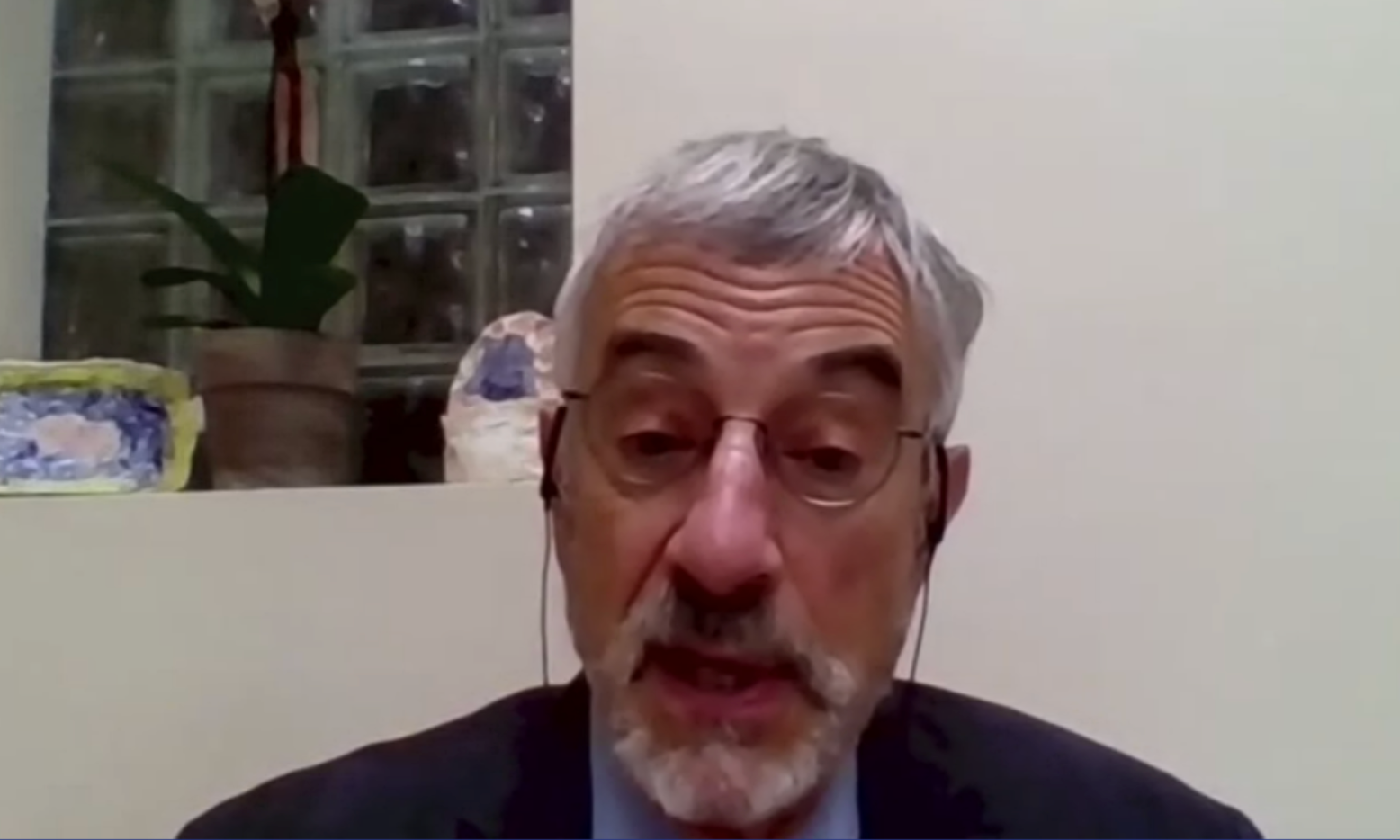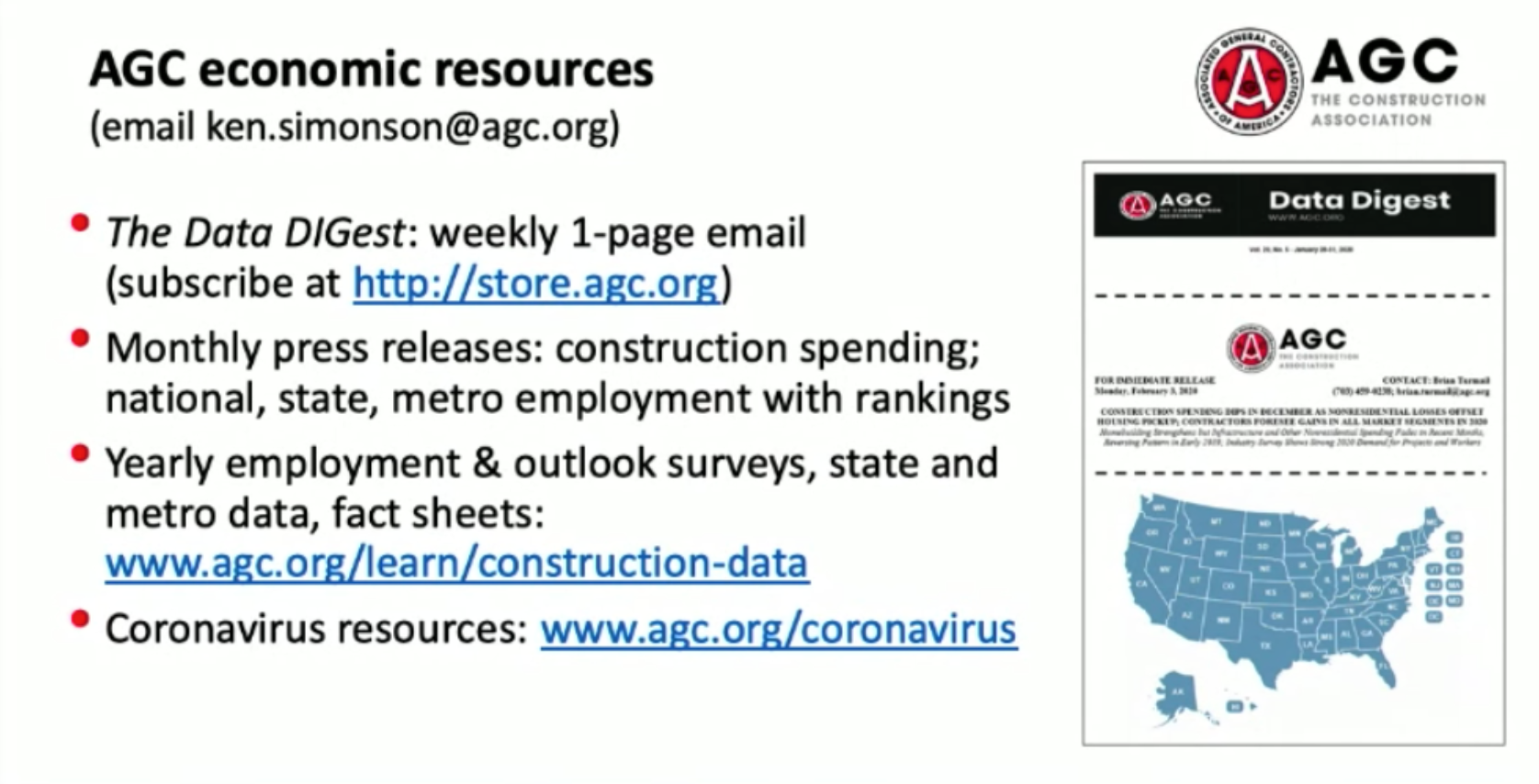Future forward: AGC's Ken Simonson Outlines Industry Outlook Amid Uncertain Times
“Manufacturing, trucking and a wide variety of professional services, as well as construction firms, will add jobs as a result of an infrastructure bill.” — Ken Simonson, Chief Economist, AGC
Nobody knows just where or how this ride will end. In a time of great uncertainty thanks to the shattering impact of the coronavirus, the construction industry, like many others, is finding its way over and around the madness. According to the “2020 Workforce Survey Analysis” by Autodesk and Associated General Contractors of America (AGC), this year is like no other—on one hand, the pandemic is undermining demand for construction, prompting project delays and cancellations, layoffs and furloughs, and on the other, it is contributing to conditions that make it difficult for a majority of firms to find craftworkers to hire.
In his presentation on Day 2 of the 2020 BAC Convention, AGC’s Chief Economist Ken Simonson presented a thorough overview of what and where the industry is headed. Working with scores of data influenced charts outlining everything from construction spending, to medium- and long-term construction impacts, Simonson said bricklayer community is little better off than others.
“The good news is that bricklayers are ahead of the nation medium,” he said.

One of the main emphasis of AGC is pushing is the long overdue investment in infrastructure, which Simonson said would help created much-needed structures that will provide lasting improvements in quality of life, productivity and the economy. According to the “2020 Workforce Survey Analysis,” 55% want a larger federal investment in all forms of public infrastructure and facilities.
“Manufacturing, trucking and a wide variety of professional services, as well as construction firms, will add jobs as a result of an infrastructure bill,” Simonson said.
No conversation about the year can be had without the fallout from the pandemic. Simonson said that one-third of respondents reported that a project under way had been halted as a result of the pandemic or the economic fallout from it, while 60% reported a scheduled project had to be postponed or canceled. “Over the past 12 months, 41% of construction firms have reduced headcount, including 30 percent that furloughed or terminated employees as a result of the pandemic.”
In the Q&A portion of Simonson’s presentation, one BAC delegate asked what areas, if any, were holding their own amid the chaos. Simonson said that the Northeast, with 45% of firms stating that it will take more than six months for their volume of business to return to normal there, compared to 34% in the West, 35% in the South, and 42% in the Midwest.
“One of the bigger surprises is that Indianapolis and Baltimore are two cities that have shown the biggest increases,” Simonson said.

Another interesting point from Simonson’s presentation involved the opportunity for the construction industry to not only survive the pandemic and economic slowdown, but to have an opportunity to recruit unemployed workers from other sectors of the economy. “Finding the right way to do this will make it easier for construction firms to find workers now, and to staff up once demand for construction resumes.”
Simonson also pointed to the November election as a sign of what may lie ahead for the industry. The Association, which already is pushing Congress and the Administration to enact new recovery measures and to pass liability reforms to protect firms taking steps to protect workers from coronavirus lawsuits, hopes that there will be headway made in areas like clean energy and energy efficiency.
“There are a lot of opportunities in these areas—ways to take advantage of areas like R&D in energy efficiency,” Simonson said. “We have to get past the gridlock that is hampering progress.”
